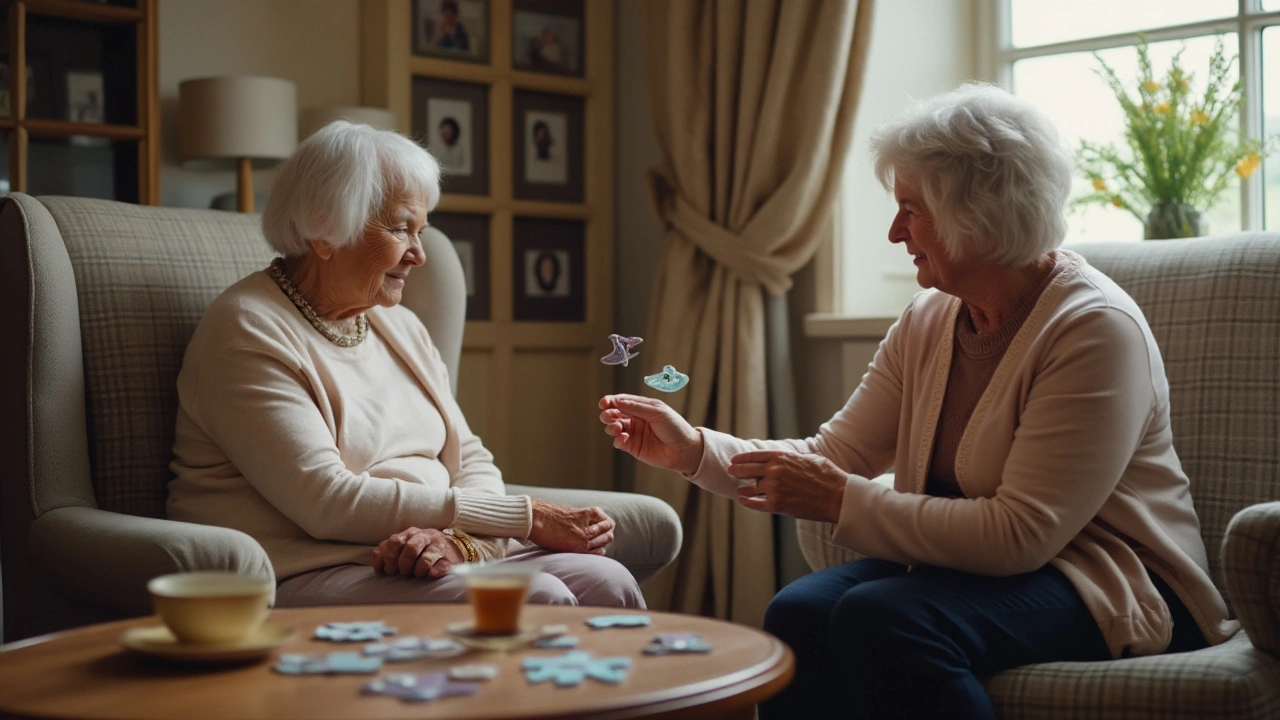Occupational Therapy: Practical Help for Daily Life
Occupational therapy (OT) helps people regain or adapt skills for everyday activities—dressing, cooking, working, even driving. If you're dealing with injury, stroke, chronic illness, or age-related changes, OT focuses on what matters to you and builds simple steps to get there.
OT isn’t just exercises. Therapists break tasks into manageable parts, teach new ways to do things, recommend devices, and change environments so you can be more independent. They work with adults, kids, and families, and they often coordinate with doctors, physiotherapists, and pharmacists.
What an occupational therapist does
First, they ask what you want to do. Then they observe how you do it. From there they create a short plan: practical drills, home or workplace changes, and tools like grab bars, reachers, or adapted utensils. They’ll also show pacing and energy-saving tricks that make fatigue easier to manage.
Therapists measure progress with real tasks—can you put on shoes without pain? Can you cook a simple meal? That keeps therapy useful and short. Many OT programs include fall-prevention checks, cognitive strategies after brain injury, and training for caregivers so everyone feels safer at home.
How medications and OT work together
Some problems need both drugs and OT. Pain medicines, blood pressure drugs, or medications for mood and cognition can make therapy more effective by reducing symptoms that block progress. Tell your OT about current meds—timing, side effects like dizziness, or sedation changes how therapy is planned.
If a medication causes weakness or balance issues, your therapist will adjust activities and recommend safety gear. If new meds help you sleep or focus better, therapists may increase therapy intensity. Coordinating with your prescriber keeps things safe—OTs often suggest questions for your doctor or pharmacist so everyone is on the same page.
How to choose an OT? Look for licensed practitioners with experience in your condition. Ask about treatment examples, session length, and measurable goals. If mobility is limited, ask if home visits or telehealth sessions are offered. Check if your insurance covers OT and what paperwork is required.
Simple home changes can make a big difference: remove rugs that trip you, add bright lighting, use non-slip mats, and keep commonly used items within reach. Small adaptive devices—button hooks, sock aids, and jar openers—save time and frustration. Your therapist will suggest what matches your budget and lifestyle.
Want quick next steps? Write down three daily tasks you struggle with, list medications you take, and bring both to your first OT appointment. That gives your therapist the real info needed to create a plan that fits your life, not a clinic schedule.
Look for resources: your local hospital often runs OT clinics and support groups. Search for assistive technology grants through vocational rehab or aging services. Apps that remind you of exercises and medication times help carry therapy into daily life—try voice assistants, pill reminders, or simple timers. If you have questions about meds interacting with therapy, bring specific drug names to the appointment so clinician and pharmacist can give clear advice. Visit Candrugstore.com for trusted, practical guides.
8
How Occupational Therapy Transforms Alzheimer's Dementia Care
Occupational therapy plays a crucial role in the care of individuals with Alzheimer's dementia. By focusing on maintaining independence and improving the quality of life, these therapies can make daily activities more manageable. This article delves into various techniques, benefits, and real-life applications of occupational therapy in dementia care.
Latest Posts
Popular Posts
-
 GLP-1 Side Effects: How to Manage Nausea, Dosing, and Realistic Expectations
GLP-1 Side Effects: How to Manage Nausea, Dosing, and Realistic Expectations
-
 Acromegaly: Understanding Excess Growth Hormone and Effective Treatment Options
Acromegaly: Understanding Excess Growth Hormone and Effective Treatment Options
-
 Small Intestinal Bacterial Overgrowth: Breath Tests and Treatment Explained
Small Intestinal Bacterial Overgrowth: Breath Tests and Treatment Explained
-
 How to Keep Medications Safe from Children and Pets at Home
How to Keep Medications Safe from Children and Pets at Home
-
 Amyotrophic Lateral Sclerosis: How Riluzole Slows Neurodegeneration and Extends Life
Amyotrophic Lateral Sclerosis: How Riluzole Slows Neurodegeneration and Extends Life



